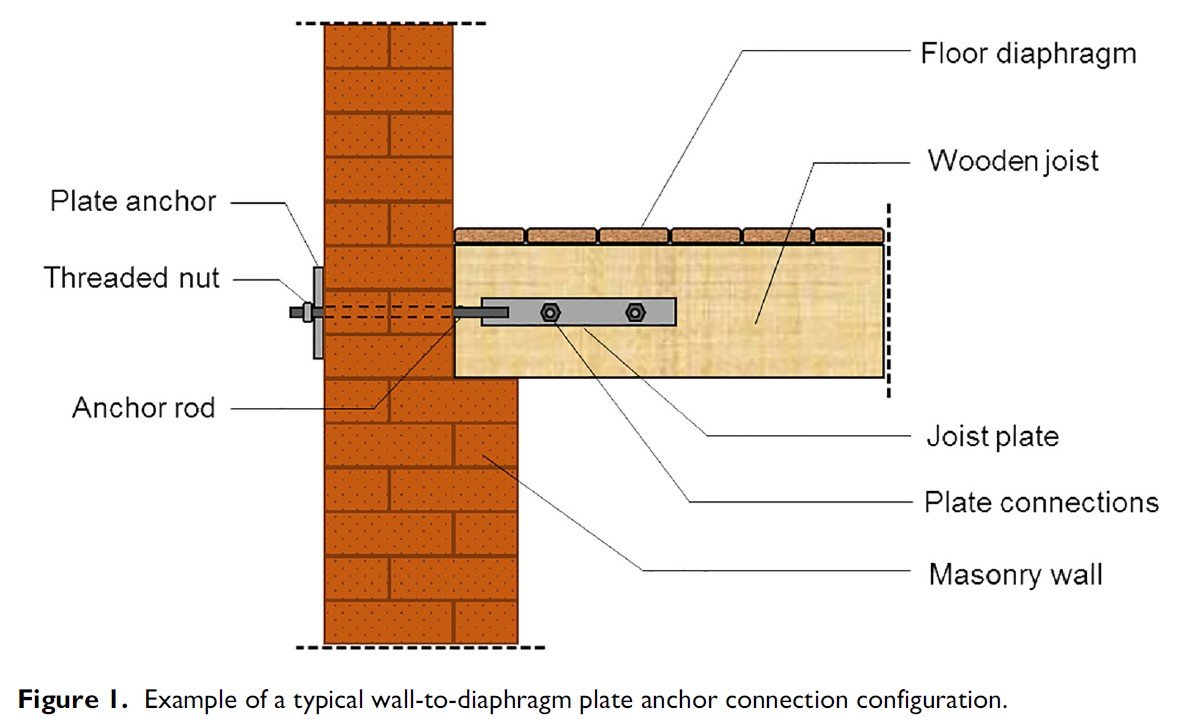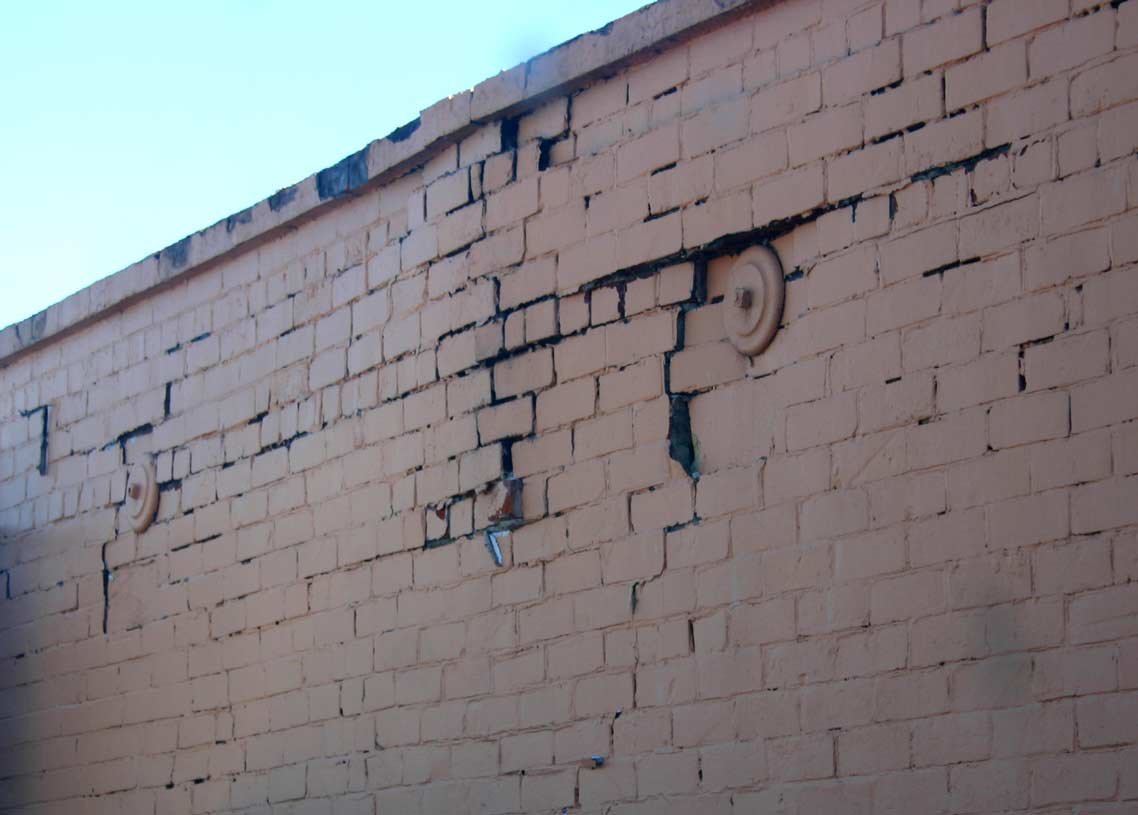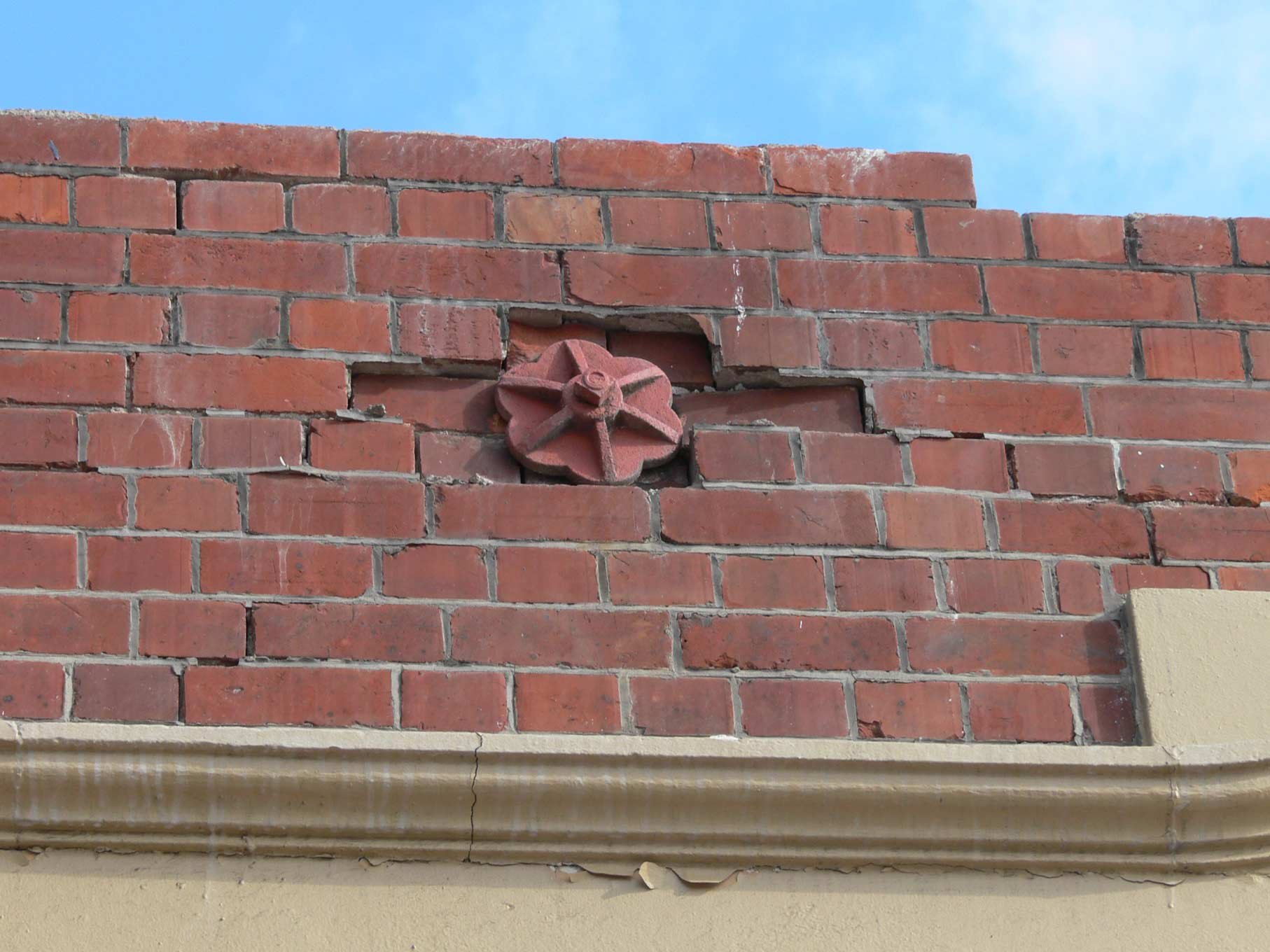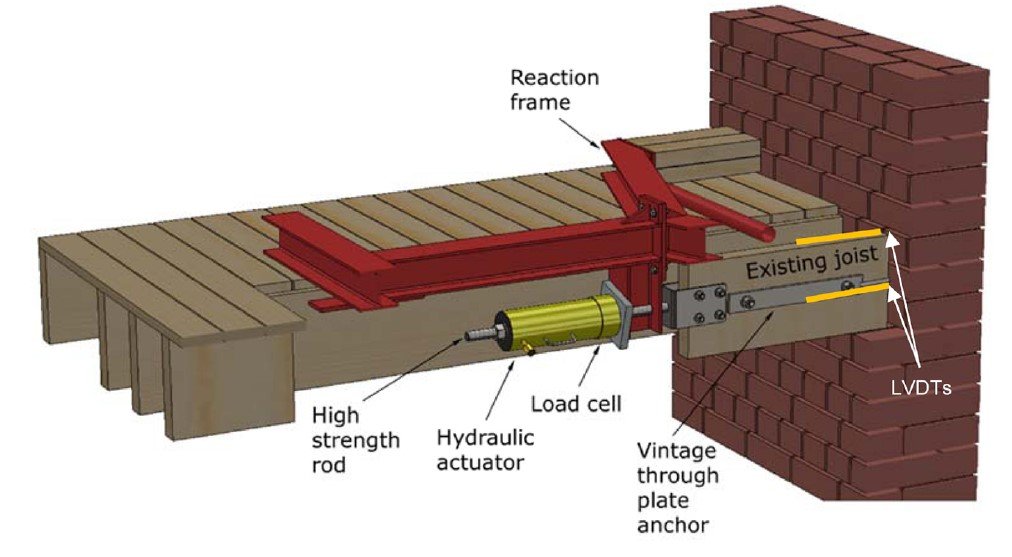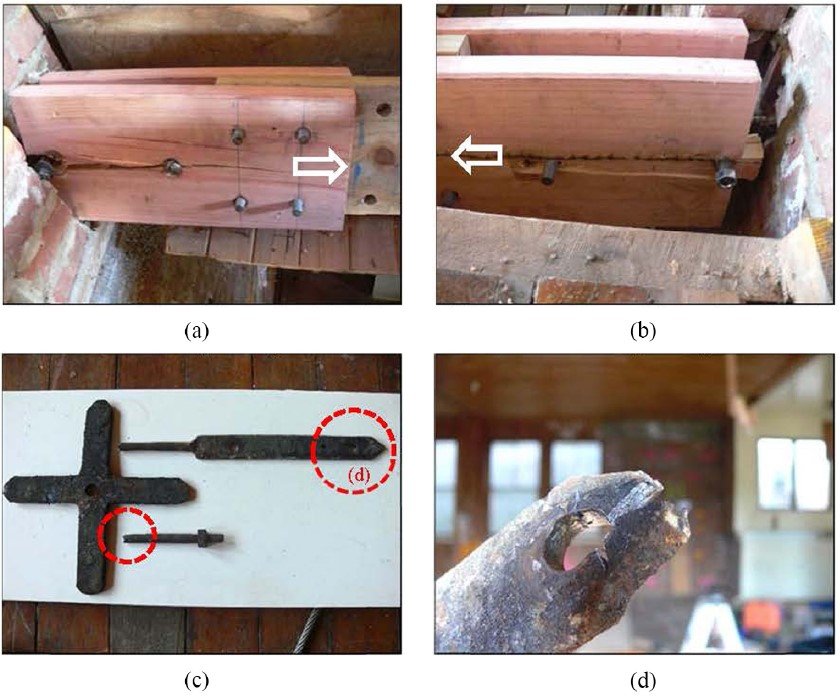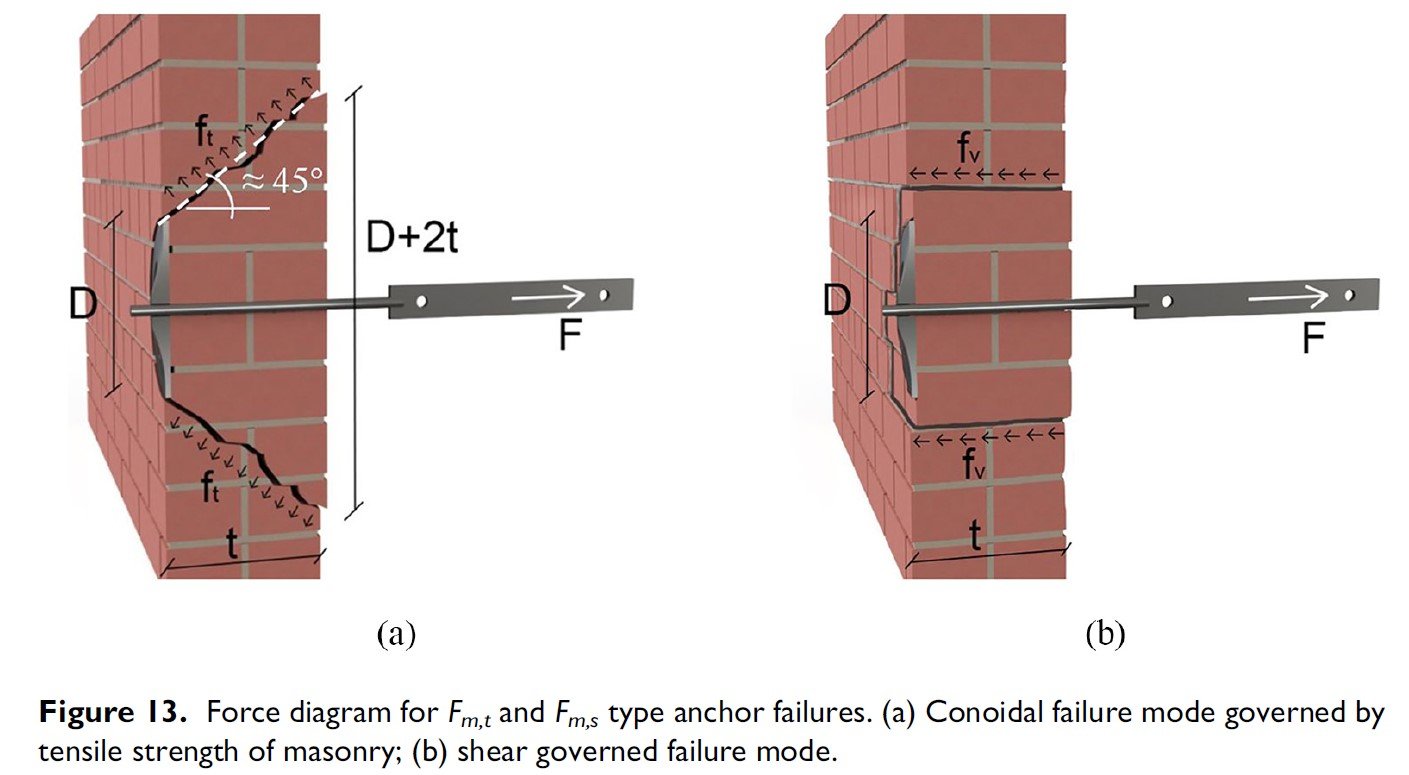TESTING OF URM WALL-TO-DIAPHRAGM THROUGH-BOLT PLATE ANCHOR CONNECTIONS
EARTHQUAKE SPECTRA, 37(1)
Scope and methodology
Effective wall-to-diaphragm connections has been shown to significantly improve the global seismic behavior of unreinforced masonry (URM) buildings
This paper provide a methodology to predict the capacity of plate anchor (aka patress plates) using a basic mechanics approach and a physical validation of the results via onsite testing.
Comparisons with current strength recommendations in standards and guidelines are provided.
6 existing vintage plate anchor connections were tested in direct tension in an historic URM building, and 12 newly installed plate anchors were tested in tension in two additional URM buildings.
FINDINGS
Plate anchor typically do not limit the ultimate strength of the URM wall-diaphragm connection. The limiting component is often an inadequately designed connection between the joist plate and the joist.
Capacity of plate anchors is heavily depending on masonry material properties.
Increasing mortar bed joint shear strength contributed greatly to the overall capacity of URM wall-diaphragm connections.

